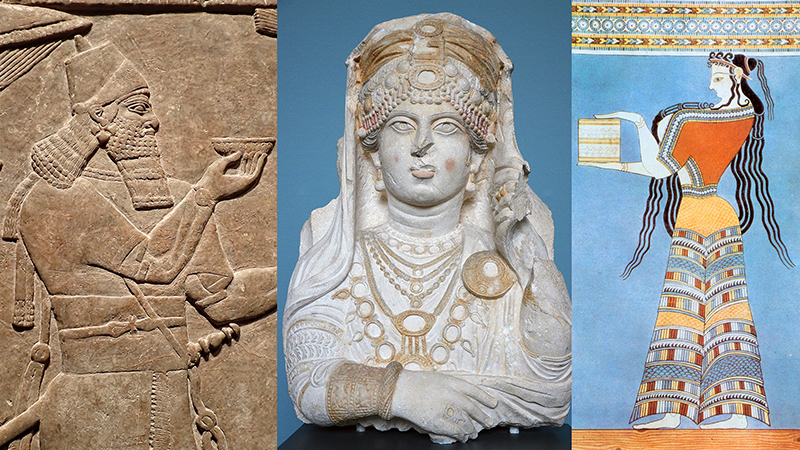About the lecture
Colours were an important aspect of ancient art and architecture. However, due to unfavourable conditions of preservation, the fragility of paint, and occasionally to actual cleaning, the original colouration of ancient artworks has usually disappeared, leaving us with the “naked”, white stone artefacts. Yet, careful, scientific examinations can detect their original appearance. So far, research focus has mainly centred on sculpture from the Greco-Roman period, while artefacts from the more outlying areas of the ancient Mediterranean world and the Near East in comparison has been somewhat overlooked.
The Ny Carlsberg Glyptotek in Copenhagen holds one of the world’s largest collections of Palmyrene funerary portraits. In this lecture, I present the recent research carried out on selected artefacts from this collection, which has revealed the original splendour of the men and women rendered in these portraits, including the colours of their garments and jewellery as well as their facial features and hair. When juxtaposing these results with knowledge of the textiles and accessories recovered from archaeological contexts in ancient Palmyra, we can reconstruct the possible original appearance of these portraits. This vividly illustrates how ideal beauty was constructed and perceived in ancient Palmyra.
About Dr. Brøns

Cecilie Brøns is a Senior researcher at the Ny Carlsberg Glyptotek in Copenhagen, where she is the director of an interdisciplinary research project on the polychromy of ancient art and architecture, entitled Sensing the ancient world: The invisible dimensions of ancient art, financed by the Carlsberg Foundation. She received her PhD in Classical Archaeology in 2015 from The National Museum of Denmark and The Danish National Research Foundation’s Centre for Textile research (CTR) at the University of Copenhagen. Her research concentrates on ancient polychromy and textiles, particularly in relation to ancient sculpture as well as on the importance and effect of the senses for our perception and understanding of ancient sculpture. Her recent focus has been on the funerary portraits of ancient Palmyra.
Suggestions for further Reading
- Brøns, C., S.B. Hedegaard, J. Bredal-Jørgensen, D. Buti, G. Pastorelli (2020), The Rarest Blue: An exceptional find of lapis lazuli on a funerary portrait from ancient Palmyra, Archaeometry 62, no. 3.
- Hedegaard, S.B. & C. Brøns (2019), New Research from Ny Carlsberg Glyptotek: Pigments in Ancient Palmyra, in: A.M. Nielsen & R. Raja (eds.), The Road to Palmyra, Copenhagen: Ny Carlsberg Glyptotek, 251-274.
- Heyn, M.K. (2019), Valuable Impressions of Women in Palmyra, in: A.M. Nielsen & R. Raja (eds.), The Road to Palmyra, Copenhagen: Ny Carlsberg Glyptotek, 173-192.
- Krag, S. (2018), Funerary Representations of Palmyrene Women. From the First Century BC to the Third Century AD. Turnhout: Brepols.
A Digital Lecture Series on Beauty, Attractiveness and Sex Appeal in the Ancient Mediterranean World
The purpose of this lecture series is to investigate concepts of beauty and attractiveness in ancient cultures, and to explore how these concepts relate to gender, hierarchy and power.
Five excellent international researchers, experts on the material cultures and texts of the ancient Mediterranean, will each present a 30-minute lecture, followed by amble time for questions and discussion.
We are interested in mapping ancient attractiveness as broadly as possible and therefore we encourage our speakers to consider beauty from a multi-sensorial perspective and to give thought to both touch, smell, taste, hearing and vision in constructions of beauty and sex appeal.
The lecture series is organized by Professor Anne Katrine de Hemmer Gudme and hosted by The Faculty of Theology at the University of Oslo and the Faculty’s research group Biblical Texts, Cultures and Receptions.
Digital event - how to participate
The seminar will be held digitally due to Covid-19. If you wish to attend the the conference you need to register in advance.
- A zoom link will be sent to you before the event.
- You can download Zoom or use your browser: https://zoom.us/download
- This lecture is part of the lecture series Ancient Attraction
